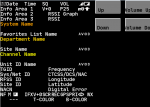eorange
♦RF Enabled Member♦
Thanks for checking, and those are the same versions I'm running.
I've always used Raspberry Pi OS lite which boots to a command prompt. My Python code runs automatically after boot which then utilizes PyGame for my display. I never needed the extra overhead of the desktop GUI in the full OS.
But, this confirms my suspicion that the full desktop provides better touchscreen support (it has to, to make the desktop work).
Next experiments to get touchscreen working:
1. Load PyGame 2.0.0, which apparently has libsdl 2.x.x and hope for the best. libsdl 1.2.x is the root cause of touchscreen not working. I have no idea if PyGame 2.0.0 and libsdl 2.0.x fixes things. Also hoping my existing code will still run properly. I'll likely write a small touchscreen test first.
2. Load the full OS and make PyGame run fullscreen instead of in a window. This is sure to work (I hope). It grates on me a little because a whole lot more of OS is loaded in memory which I don't need, but I don't get to pick and choose if #1 doesn't work.
I've always used Raspberry Pi OS lite which boots to a command prompt. My Python code runs automatically after boot which then utilizes PyGame for my display. I never needed the extra overhead of the desktop GUI in the full OS.
But, this confirms my suspicion that the full desktop provides better touchscreen support (it has to, to make the desktop work).
Next experiments to get touchscreen working:
1. Load PyGame 2.0.0, which apparently has libsdl 2.x.x and hope for the best. libsdl 1.2.x is the root cause of touchscreen not working. I have no idea if PyGame 2.0.0 and libsdl 2.0.x fixes things. Also hoping my existing code will still run properly. I'll likely write a small touchscreen test first.
2. Load the full OS and make PyGame run fullscreen instead of in a window. This is sure to work (I hope). It grates on me a little because a whole lot more of OS is loaded in memory which I don't need, but I don't get to pick and choose if #1 doesn't work.







